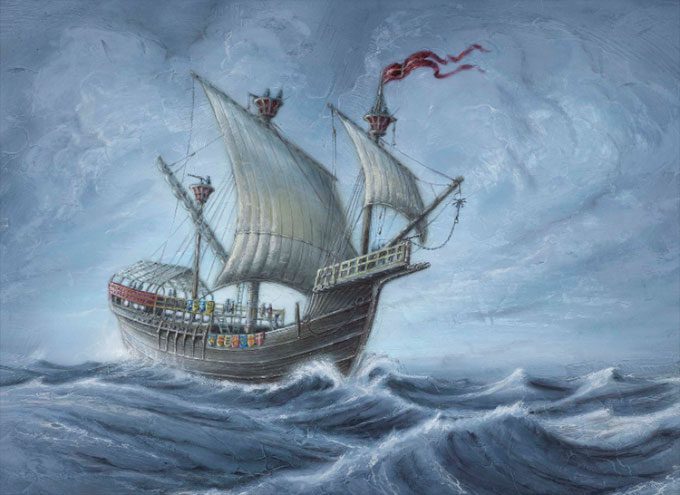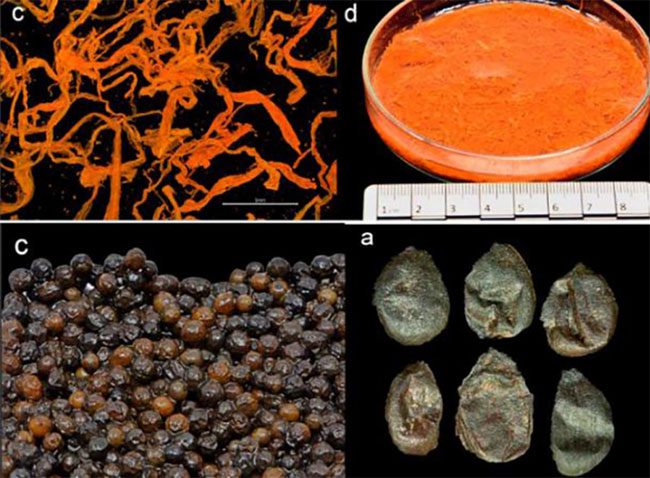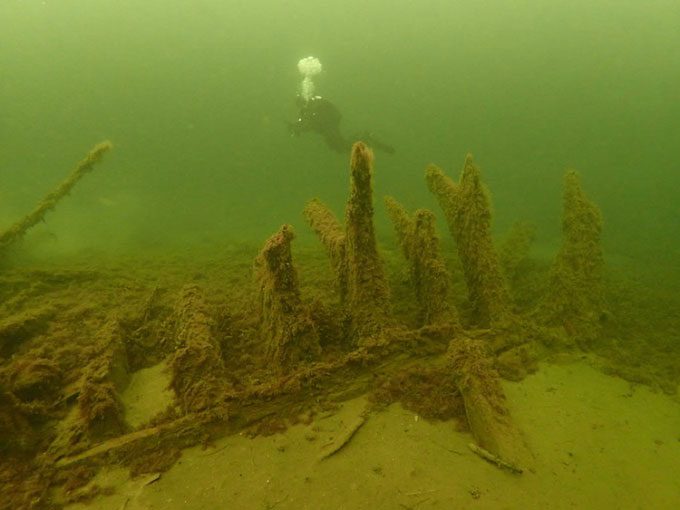New discoveries about the royal shipwreck Gribshunden, which sank in the southeastern waters of Sweden, reveal thousands of spice and fruit specimens.

Model of the warship Gribshunden during its operational period. (Photo: Vänehem Illustrations).
While en route to attend a political summit in Sweden in 1495, the warship Gribshunden, once owned by King Hans of Denmark, suddenly caught fire and sank into the Baltic Sea. The wreck was first discovered by local divers in 1970 at a depth of 10 meters north of Great Oak Island, off the municipality of Ronneby in Sweden. It is one of the best-preserved shipwrecks from the late Middle Ages.
In a new study published in the journal PLOS ONE, archaeologists Mikael Larsson and Brendan Foley from Lund University report that they have found over 3,000 new specimens in containers previously overlooked by earlier exploration teams.

Saffron, pepper, and almonds found on the Gribshunden ship. (Photo: Larsson/Foley).
These specimens include a variety of spices such as ginger, saffron, pepper, mustard, cloves, dill, and nutmeg. Some spices originated from Indonesia, indicating that King Hans had an extensive trade network. Additionally, the research team discovered various fruits such as black raspberries, red raspberries, grapes, and dried flax seeds used as snacks, showcasing the wealth and power of the king, as reported by Ancient Origins on February 11.
Larsson and Foley stated that the “treasure of spices” was well preserved thanks to the microenvironment created by the wooden shipwreck on the seabed. When the Gribshunden sank, it dragged along drifting seaweed, resulting in a thick seasonal deposit of algae. As the algae decomposed, it created locally low-oxygen areas, contributing to the excellent preservation of the plant materials.

The stern area of the ship is the most exposed part of the wreck structure. (Photo: Johan Rönnby).
In addition to spices and fruits, previous explorations also uncovered many artifacts such as armor, weapons, coins, sturgeon storage barrels, and a wooden jug with the king’s crown emblem.
With numerous specimens found in excellent preservation conditions, the Gribshunden spice collection represents some of the earliest archaeological examples of luxury items in the Baltic region, reflecting the wealth of King Hans and providing valuable insights into the lifestyle of the nobility during the Middle Ages.


















































